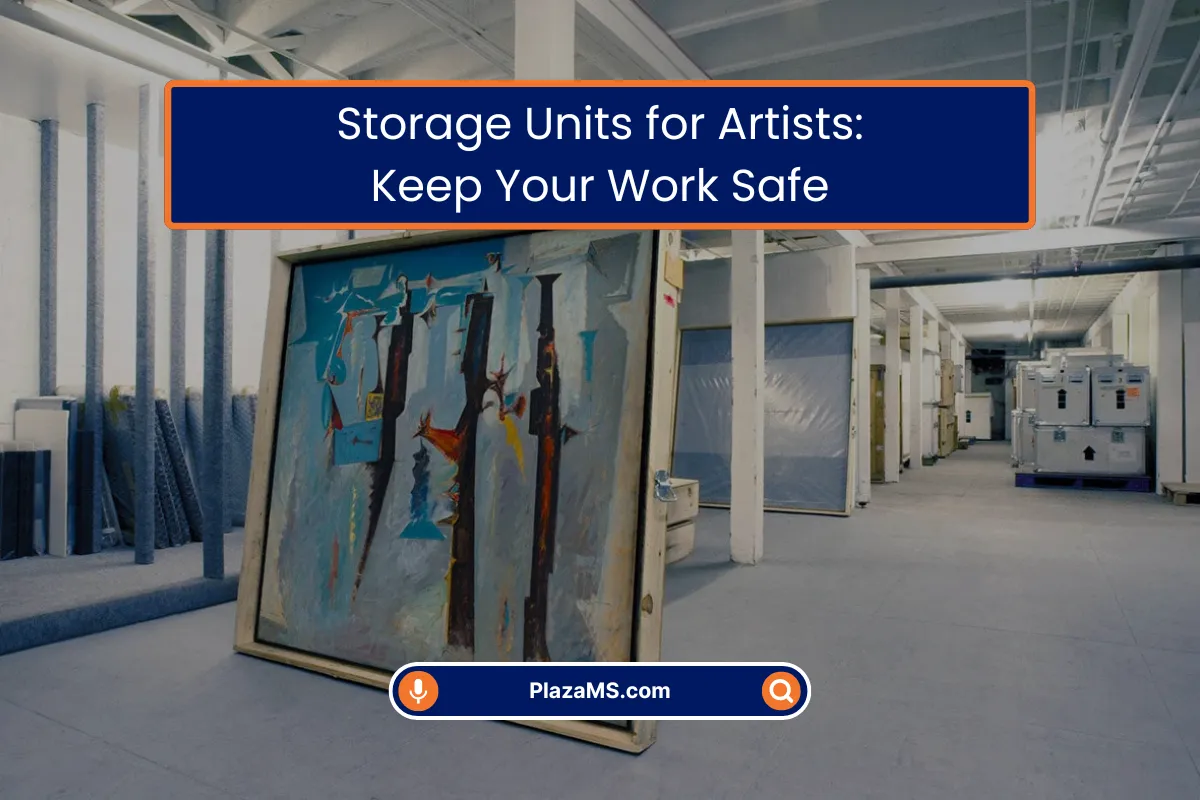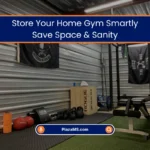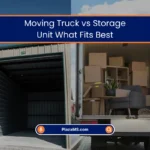You finally finished that series. The canvases are dry, you’ve had the show, and now… what? They’re leaning against every wall of your apartment, collecting dust and giving you anxiety every time you walk past them. Your partner is making “suggestions” about the garage.
I’ve been there. I’m a painter. And I also help run Plaza Mini Storage with my family. So I’ve seen the nightmare scenarios from both sides. The warped canvas from a damp basement. The faded watercolor from an attic heatwave. The mouse… well, let’s not talk about the mouse.
It’s enough to make you want to just shove it all in a closet and hope for the best.
But don’t. Let’s do this right. It’s not hard, I promise. Think of it as just putting your art to bed for a little while.
Why Your Garage Is the Real Enemy?
I don’t care how clean it is. The temperature in there is on a rollercoaster ride every single day. Humidity seeps in. It’s a death trap for art. The same goes for the attic. Just forget they exist as an option.
Okay, lecture over. Now, how do we pack this stuff?
For canvases (my jam):
You know that smooth, kinda waxy paper they put between prints when you buy them? That’s called glassine paper. Get a roll. It’s cheap. Before anything else, gently place a sheet of it over the front of your painting. This keeps dust off and, crucially, it breathes. No plastic. Ever. Plastic equals moisture equals mold. Trust me.
Then, get these little cardboard corner things. They look like tiny pizza boxes for your frame’s corners. Best ten bucks you’ll ever spend. Then slide the whole thing into a picture box. If it’s big, you might have to make a simple crate. It’s easier than it sounds.
For works on paper:
This is the big one. ACID-FREE. Say it with me. The acid in regular cardboard and tissue paper will slowly burn and yellow your precious drawings. It’s science. It sucks. So spend the extra few dollars on acid-free folders and a flat-file box. Keep everything flat. Don’t roll it. Your future self will thank you.
For weird, 3D stuff:
You’re building a nest. Get a big box and a ton of plain, brown packing paper (not the newspaper with ink that smudges). Crumple it up and make a little bed. Place your sculpture in. Crumple more paper and gently stuff it around the piece until it cannot move. Not a millimeter. If it can shake, it can break.
Where Should Your Carefully Packed Art Nest Go?
This is the part where my artist hat comes off and my storage guy hat goes on. You need a climate-controlled unit. I’m not just saying that because it’s our business. I’m saying it because it’s the only way to guarantee a stable environment. It’s not about being cold or hot. It’s about being consistent. No wild swings. No moisture. Just a boring, stable, perfect 55% humidity and 70-degree room. All day, every day.
That’s what we built at Plaza Mini Storage. It’s the solution I needed as an artist, but never could find. It’s not a dusty old warehouse; it’s a clean, safe, and most importantly, stable home for your work until you’re ready for it again. We have local artists here all the time, and half the time I end up talking shop with them about their projects instead of their rental agreement.
A few quick-fire tips from my own mistakes
- Store canvases upright. Never stack things flat on top of each other.
- Leave a tiny gap between your boxes and the wall. Airflow is good.
- Write what’s actually IN the box on the side. “Blue Abstract #3” is way more helpful than “Art Stuff.”
- Just go visit it sometimes. It’s your work. It’s nice to see it’s doing okay.
Storing your art isn’t admitting defeat. It’s just being a responsible parent to your creations. You made something amazing. Now let’s make sure it stays that way.
If you’re ever unsure about how to pack something specific, just give us a shout at the office. Seriously. We’d rather you ask than make a mistake you’ll regret later.












0 Comments